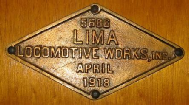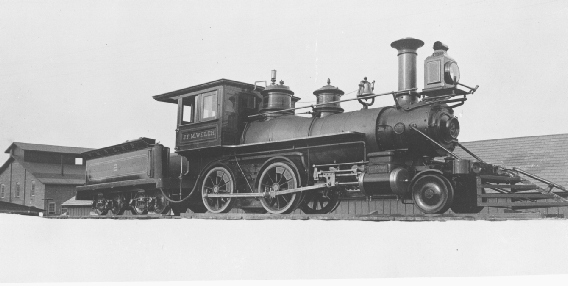Lima Kay NG Model Steam Locomotive
The article in the Taminda Advertiser for May/June 2016, pages 24-
Keith Watson from Perth Western Australia, on a visit to the USA, saw a model of the Lima 2-
References can found to Keith Watson's Lil Lima as the basis for similar locomotives subsequently constructed by modellers in the USA, Australia, and New Zealand. Ken Baxter's model was constructed in the early 1990s using the Lil Lima design which he renamed as Lima Kay after his wife (Kay).
Research strongly suggests that the Lil Lima design was based on a locomotive produced by the Lima Locomotive Works in 1888, construction number 204, built for Welch Brothers of Alabama. This was the only rod type 2-
The Lima Locomotive Works was originally a small engineering shop in Lima, Ohio, which commenced operations in 1859 supporting the local agricultural industry. It was soon to be taken over by a group of investors and renamed the Lima Agricultural Works. The business closed in 1866 due to the death of one of the original partners, but the local community was able to put together another group of investors and reopened in 1869, under the business name of Carnes, Harper and Company, which operated as the Lima Machine Works. In 1870 on the withdrawal of Harper it was reorganised and the business name changed to Carnes, Argerter and Company.
Over the next 10 years Lima Machine Works steadily developed and built an increasingly wide range of equipment for the timber industry and by 1880 almost all of their customers were exclusively from that industry. It was as a result of their prominence in the timber industry that Ephraim Shay approached the company in 1878 to build a new locomotive design which used gears instead of rods to deliver more pulling power and greater efficiency when transporting logs to mills.
The Shay design proved so successful that many in the industry wanted to have similar locomotives and in order to meet the demand Shay licenced Lima Machine Works to build and market the Shay geared locomotive. By 1880 The business almost exclusively produced Shay locomotives and, in the next 10 years, built over 300 Shay units and would go on to produce more Shay geared locomotives than any other company in the world. In 1879 Lima Machine Works also delivered its first rod locomotive and went on to produce 33 units over the next 10 years. Wheel configurations were either 0-
In 1925 William E. Woodward, Lima Locomotive Works' lead mechanical engineer, developed the concept of 'Super-
Lima locomotive production ceased in 1951 and, over its 73 year history, Lima produced 7,752 locomotives consisting of 4,787 conventional rod locomotives, 2761 Shay geared locomotives, 174 diesel-

Neville Hall
References:
www.limalocomotiveworks.com
www.californiarailroad.museum
www.allencountymuseum.org
www.bluffton.edu
www.wikipedia.org/wiki/Lima_Locomotive_Works

Lima Locomotive Works: Construction number 204, Built in 1888, Wheel configuration 2-